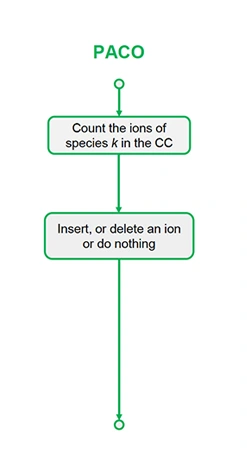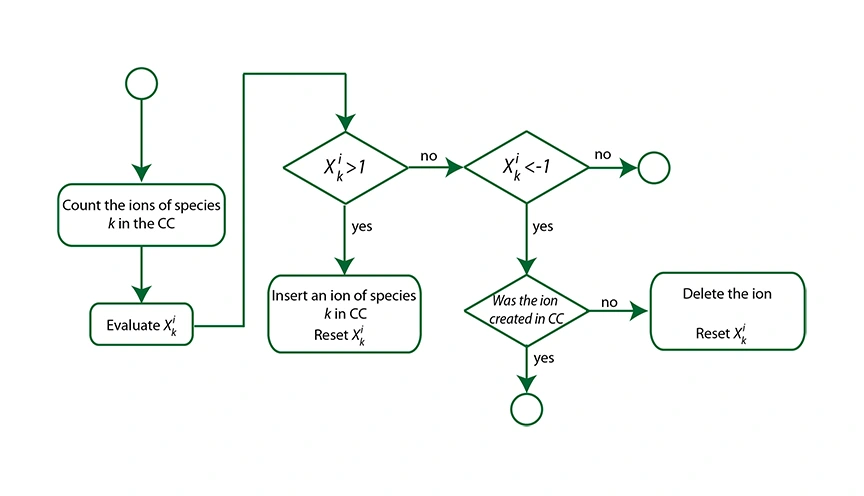Periodic Boundary Conditions are almost universally adopted in simulations of biological systems at the microscopic scale, in order to replicate as close as possible the experimental environment, while keeping the number of particles to a minimum. While PBC are generally great, they do not allow to simulate gradients in-between the two sides of the simulation box, as these are actually the same side of the box under PBC. This shortcoming is particularly severe in simulations of membrane proteins that at physiological conditions sits between the intracellular and the extracellular environments, which are characterized by very different ion concentrations. In this study, we propose PACO, a method to include concentration gradients in particle-based simulations with PBC. PACO was implemented both for Molecular Dynamics and Brownian Dynamics simulations. The peculiar characteristics of PACO allowed to simulate concentrations going from mM to µM with high precision. PACO opens the way for simulations of membrane proteins at conditions that better resembles the physiological ones. As one of the first application, PACO was used to analyze conduction and selectivity in Ca2+ channels.
Berti, C., Furini, S. & Gillespie, D. PACO: PArticle COunting Method to Enforce Concentrations in Dynamic Simulations. J. Chem. Theory Comput. 12, 925–929 (2016).
Alavizargar, A., Berti, C., Ejtehadi, M. R. & Furini, S. Molecular Dynamics Simulations of Orai Reveal How the Third Transmembrane Segment Contributes to Hydration and Ca 2+ Selectivity in CRAC Channels. J. Phys. Chem. B acs.jpcb.7b12453 (2018).


